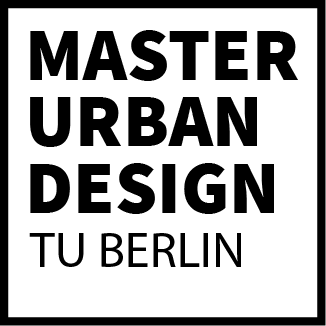 Urban Design Studio 2023/2024
Urban Design Studio 2023/2024
Tutors: Juliana Canedo, Christian Haid, Anke Hagemann
Chair: Habitat Unit
Students: Tolga Dervish, Salma Elbasty, Tian (Michelle) Wang
During the analysis phase of this studio we used NABU as a case study to investigate the issues around water conservation in the area. As part of this analysis, we learnt that part of NABU is rewetted peatland and that the rural areas of Northern Europe contain large peat deposits—the accumulation of partially decomposed organic matter that occurs in waterlogged soils. 
These peatlands have been drained over time in order to create land that is suitable for traditional agricultural use. This has significant ecological impacts as peat begins to decompose when exposed to oxygen and releases large amounts of CO2—5% of global CO2 emissions.1 The draining of peatlands thus also results in the loss of habitats, biodiversity, water security, and water quality—all compounded by the warming effects of the CO2 they are emitting. 
There is now increasing interest in peatlands as a way of meeting emissions targets as nations face the realities of those targets. In November 2021, Germany committed to reducing emissions from drained peatlands by 5 millions tonnes or 250,000 ha by 2030,2 and in March 2023, Brandenburg committed to reducing emissions from drained peatlands by 750,000 tonnes or 37,500 ha by 2030.3

Pilot projects testing the viability of transitioning from traditional agriculture to paludiculture without a loss of economic productivity have now begun throughout Germany with a number in Angermünde: Arge Kilmamoor (18ha), toMOORow (80ha in Sernitz Moor), and the Succow Foundation (360ha). While these projects are on track to make a proportional reduction of emissions from drained peatlands by 9,000 tonnes or 450 ha in Angermünde by 2030, it is unclear whether Brandenburg or Germany are also on track. Importantly, meeting 2030 targets will still result in a temperature rise of 2.7°C.4
 Providing the success of these pilot projects, it is likely that governments will continue to look to rewetting peatlands to further reduce emissions. Once economically productive peatlands through paludiculture are proven, the next challenge is to prove that they are culturally viable. To enable the mass rewetting of peatland throughout Germany and beyond, we need to learn to live with peatland. Peatland can longer be contained to isolated sites in conservation areas such as in the biosphere, they will need to be viable in rural and urban areas as well.
Providing the success of these pilot projects, it is likely that governments will continue to look to rewetting peatlands to further reduce emissions. Once economically productive peatlands through paludiculture are proven, the next challenge is to prove that they are culturally viable. To enable the mass rewetting of peatland throughout Germany and beyond, we need to learn to live with peatland. Peatland can longer be contained to isolated sites in conservation areas such as in the biosphere, they will need to be viable in rural and urban areas as well. 
We envision a long-term future scenario with a paludiculture-culture where all peatland in Angermünde is rewet and humans live in harmony with the natural water and carbon cycles. This includes all peatland areas from big to small and regardless of the current land use. Key to achieving this long-term scenario are the two mediumterm small-scale scenarios where two pilot projects are established to test the cultural viability of living with peat: one in a rural setting and another in an urban setting.

We also need to enable the implementation of wider policy, organisational, and cultural change by stopping the extraction and drainage of peat, set up a soil committee responsible for land-use decisions, educate and advocate through awareness campaigns in order to build alliances of solidarity, and shift from an ethos of governance of land to an ethos of stewardship of land.



